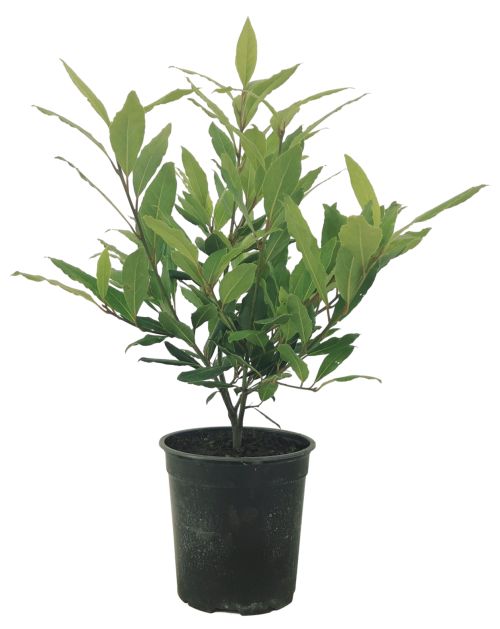Bay Tree (Laurus nobilis)
Last
updated: August 3,
2025
Care Sheet List
Lighting
Potted bay
trees thrive in full sun to partial shade. For best
growth and leaf
quality, aim for at least 6 hours of direct sunlight per day. A spot on
a sunny
patio, deck, or a west or south-facing location is ideal. In very hot
climates,
some afternoon shade can prevent leaf scorch. If overwintering indoors,
place
the tree in the brightest window available.
Watering
Routine
Bay trees
prefer consistently moist, but not soggy, soil.
They are very
susceptible to root rot if they are overwatered or left to sit in
water. Water
deeply when the top 1-2 inches of soil feel dry to the touch.
During
hot, sunny periods, this may mean watering daily, especially if the pot
is made
of a porous material like terracotta. Always allow excess water to
drain
completely from the bottom of the pot. Reduce watering significantly in
the
fall and winter when the plant is dormant.
Fertilizer
Requirements
Bay trees
are "heavy feeders" and benefit from regular nutrients during their
active growing season, which is spring and summer.
- For Liquid Feed: Use a balanced
liquid fertilizer. Miracle-Gro
Indoor Plant Food (Liquid) or Schultz Liquid Plant
Food are good, easily available options. Dilute these commercial concentrates to achieve approximately 100-200 ppm N
in your final solution. This is often equivalent to using them at "full
strength" or even slightly higher than the package's recommended "half
strength" for general houseplants.
- For Granular
Feed: A slow-release granular fertilizer, such as Osmocote
Smart-Release Plant Food All-Purpose, can be applied at the beginning
of the growing season for a steady supply of nutrients.
- DIY Fertilizer Suggestion: For robust growth, use your homemade 3-1-2 liquid fertilizer concentrate (High Nitrogen) or a balanced 1-1-1 liquid fertilizer concentrate.
- For 3-1-2 concentrate (30,000 ppm N): Apply at a "Moderate to Heavy Feeding" rate, using 3.33 ml to 6.67 ml per 1 liter of water (resulting in ~100-200 ppm N). See recipe details.
- For 1-1-1 concentrate (10,000 ppm N): Apply at a "Heavy Feeding" rate, using 20 ml per 1 liter of water (resulting in ~200 ppm N). See recipe details.
Do not
fertilize your bay tree in the fall or winter.
Misting
Requirements
Bay trees
are not humidity-demanding plants. Misting is not necessary
when the
tree is outdoors. However, if you bring your bay tree indoors for the
winter,
the low humidity of a heated home can cause leaves to turn brown or
drop.
Occasional misting or placing the pot on a pebble tray can help prevent
this
and maintain a healthier appearance.
Pot Size
and Soil Type
- Pot Size: Bay trees
prefer to be somewhat root-bound. When repotting, choose a pot that is 1-2
inches larger in diameter than the current one. A pot that is
too large can hold excess moisture, leading to root rot. Repotting is
generally recommended every 1-2 years in the spring. A sign that it's
time to repot is when roots begin to emerge from the drainage hole.
- Soil Type: The key is a well-draining,
fertile soil. A high-quality, soil-based potting mix is
recommended. You can create an ideal mix by amending a standard potting
soil with perlite or coarse horticultural grit to improve drainage. A
good recipe is a mix of:
- 2 parts
all-purpose potting soil
- 1 part perlite
or horticultural grit
Important
Note on Winter Care
If you live
in an area with freezing winters, you must protect your potted bay
tree, as the
roots are not as insulated as they would be in the ground.
- Move the pot to
a sheltered location, like a garage, unheated shed, or porch, when
temperatures consistently drop below freezing.
- Ensure the
location is cool and bright.
- Reduce watering
to a minimum. The soil should be kept barely moist to prevent it from
drying out completely.


